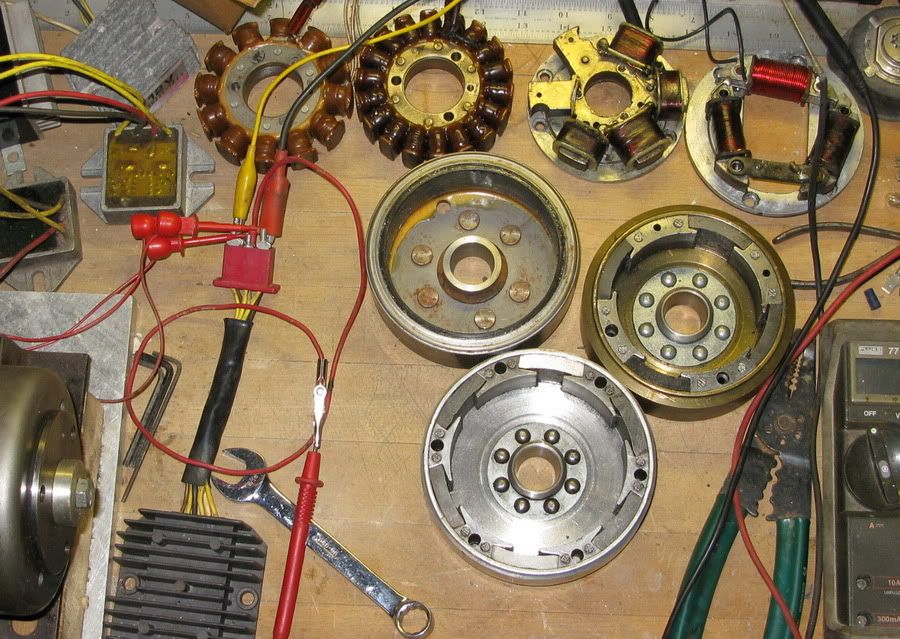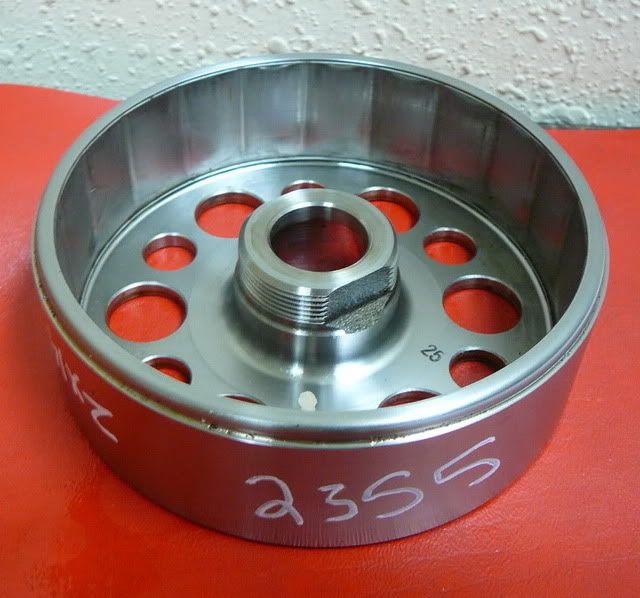Could you please (sometime) post a picture of that Suzuki-rotor showing it's inner-side with it's 12-magnets ?
The newer type rotor's don't have the same sort of magnet arrangement as the Ducati singles, you cant obviously see them on some unless there is some ferrous debris sticking to it to form a pattern. The way I tell is to run a steel tool along it and count the areas of attraction. The Singles rotors use that principle of the magnet sandwiched between two metal plates to 'intensify the attraction'.
With the newer ones the magnets are very thin and it seems as though the magnets are directly adjacent to each other and apparently have enough force from the magnet alone to do the job. Don't really know for sure because I can't see 'em. When the stator gets sucked into that ZX14 rotor you need tools to push it back out, the thing is strong...
Don't have a good pic of the Suzuki rotor taken/photobucketed but this should give you the idea...

On some, such as the much more recent gsxr and zx rotors there are flats or other cues you can count.

...to make it rotate/work physically along with the Ducati-stator, then I can't understand why you'd not get any output from that ('shotgun-wedded') pair.
All I know is that I get no measurable output from any Duke/Denso combination, I still believe it's to do with the large width of the magnets on the singles rotors overlapping too many at once of the more densely coil populated modern stators. Maybe also the tight spacing of the magnets on the Denso rotors with the singles spread out coil arrangement, one coil hits an opposite/same pole where there should be just a space, canceling something out, though that's even more speculative on my part. Outa' my depth here...
...but it doesn't seem reasonable for the other/initial 60-watts to be consumed merely from spinning the NON-loaded alternator ! -
I don't know what to tell you there, I have an in line plug in device that gives all types of output data (voltage, frequency, watts, amps, etc. in real time and/or cumulative) for whatever is plugged into it. It may not be extremely accurate but I can't image it's out by that much. I haven't tried it on the higher output stuff yet but judging by how much force it takes to turn them my hand (simply due to the permanent magnets) I think those will show a substantially higher reading. Isn't that the big disadvantage of permanent magnet alternators, that they're always 'on' to some extent? They certainly put out heat whether or not there is a load present.
Perhaps the alt.stator you're testing has an internal short-circuit ?
I can't imagine that all of them are defective...
" but the numbers seem disproportional. That alone could be a 'deal breaker' "
____ I'm not clear on what you actually mean here.
What I mean is that the 250-350 watt newer alternators put out some substantial heat, as I said above, even without a load. It seems logical that a 60 watt alternator would put out 1/3 or 1/4 that amount but it appears to be even less. All I can do is measure external temps, I cant accurately figure out what the caloric output is, probably something to do with thermal mass X temp or something. I don't want to be installing any more of a heater in my motor than is necessary...
Bill